How to Drill Into a Stud – Simple Guide in 4 Steps
Learn about how to drill into a stud within several minutes.
Any house reparation or renewal is a process that gets us either excited or scared. Drilling into a stud is a rather complicated process, especially if you haven’t ever tried to do it before.
But if you learn a few simple steps, you’ll figure out how to drill into a stud without really trying.
While not all studs are designed the same, with some being made of wood and others of a metal, the procedure for both types is essentially the same and can be mastered fast.
But this doesn’t cancel the fact that you should be aware of the type of material you’ll be drilling into.
A stud, as previously stated, can be made of metal or wood. Metal studs are commonly seen in commercial buildings and are fire, insect, and rot-resistant.
On the other hand, Wood studs are typical in most residential buildings.
If you’re new to house repair, you might not even know what a stud is or why it’s essential. Most likely, you didn’t even consider they existed until you decided to hang something fancy on the wall.
A standard drill and bit will suffice if you’re drilling into wood. Drilling into a metal stud is a little more complicated.
You might be wondering why you need to drill into a stud in the first place, and the explanation is obvious.
The stud is what holds the thing you’re trying to hang in place. If you drill directly through drywall, your beautiful, and probably expensive, the piece will fall and crash on the floor.
This article will teach you almost all you need to know about drilling into a stud.
If you follow this tutorial correctly, you will be able to hang whatever you want on your wall without any problems.
How to Tell if You’re Drilling Into a Stud
The first thing you’ll want to learn about drilling into a stud is where to look for one in the first place.
And it would be almost as simple if it were an exposed stud, but most studs are buried behind the wall, and you may not know how that wall was built and whether wood or metal studs were used.
Are there any power lines behind those walls?
So, how should you figure out where the studs are, what drill bits to use, and whether or not you should try to drill into the stud?
Fortunately, there are some methods for locating a stud in your wall. Some, on the other hand, are more accurate than others.
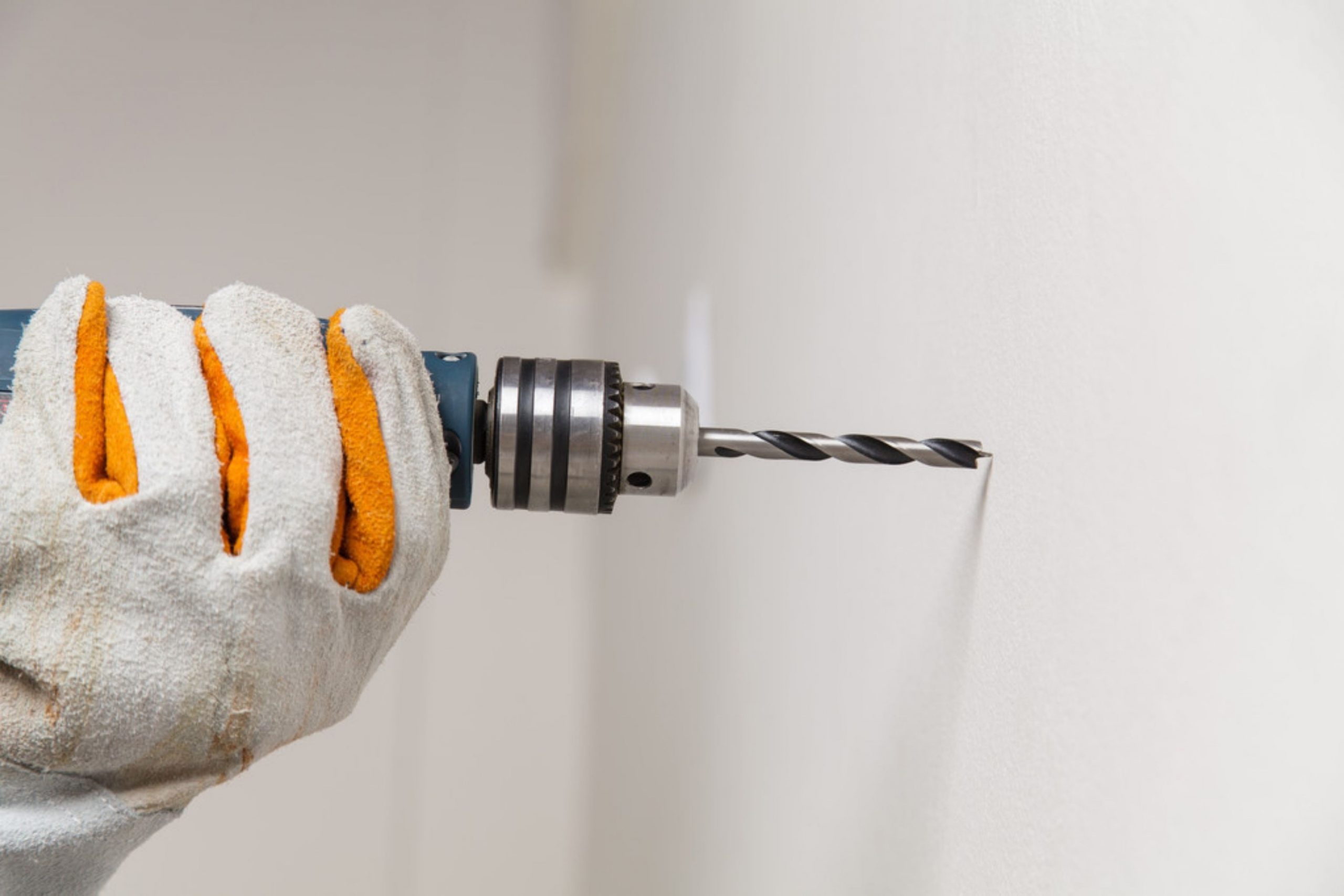
Credits: Naypong, via Crello.com
Table of Contents
Method 1: Tap the Wall
If you’ve ever drilled into a stud, you’ve probably done the tap the wall technique.
While it isn’t the most accurate method of locating a stud, it is an excellent technique to ensure that you aren’t going to drill into the drywall.
Simply knock along the wall and listen for a “hard” hit when the room is silent.
When hitting drywall, the sound will be hollow, but the sound should be strong when you find a stud.

Credits: AndrewLozovyi, via Crello.com
Method 2: Stud finder
If you’ve ever checked a workbench, you’ve probably come across a stud finder.
These are compact, portable devices that may be used to find studs on a wall quickly.
Place your stud finder flat against the wall and carefully slide it left or right.
You’ll hear a beeping sound when you discover a stud, and you’ll know it’s safe to drill there.
While some stud finders are more exact than others, most would be enough. You may always double-check it by using the tap-the-wall approach described above.

Can You Drill into a Stud?
In most cases, drilling into the stud is the best option, but if you’re hanging a miniature, lightweight painting or decoration, you might be able to get away with simply drilling a hole in the drywall and using a drywall anchor.
However, you’ll need to drill into a stud to hold larger or heavier things like a TV mount, a bookcase, or a huge mirror.
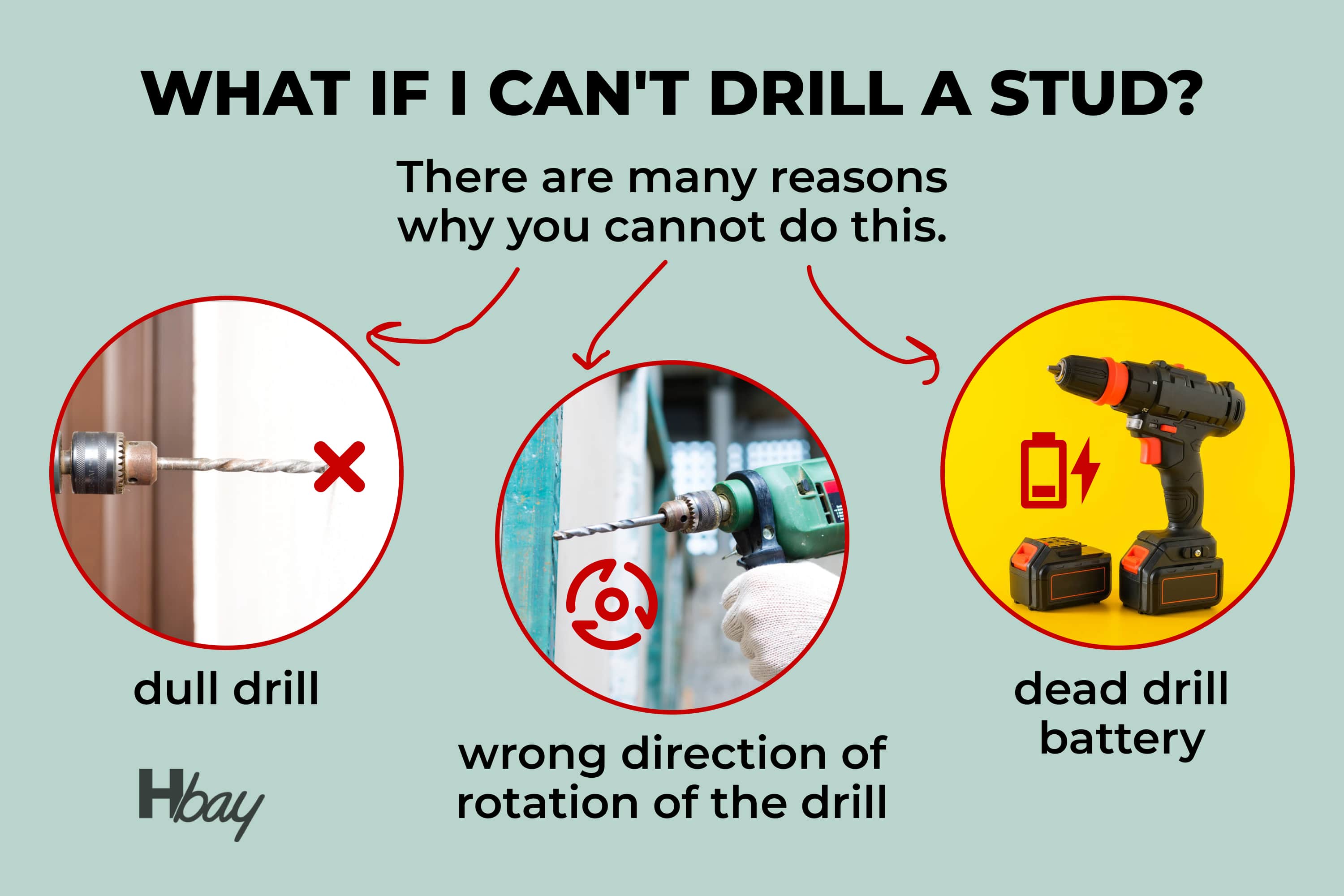
housekeepingbay.com
How to Secure Things on a Wall without Drilling?
In general, if you’re going to hang something on drywall, you usually don’t need to drill through it, to be honest.
Only extremely light things should be hung on drywall without a stud, and you can usually hammer a nail into the drywall to secure it.
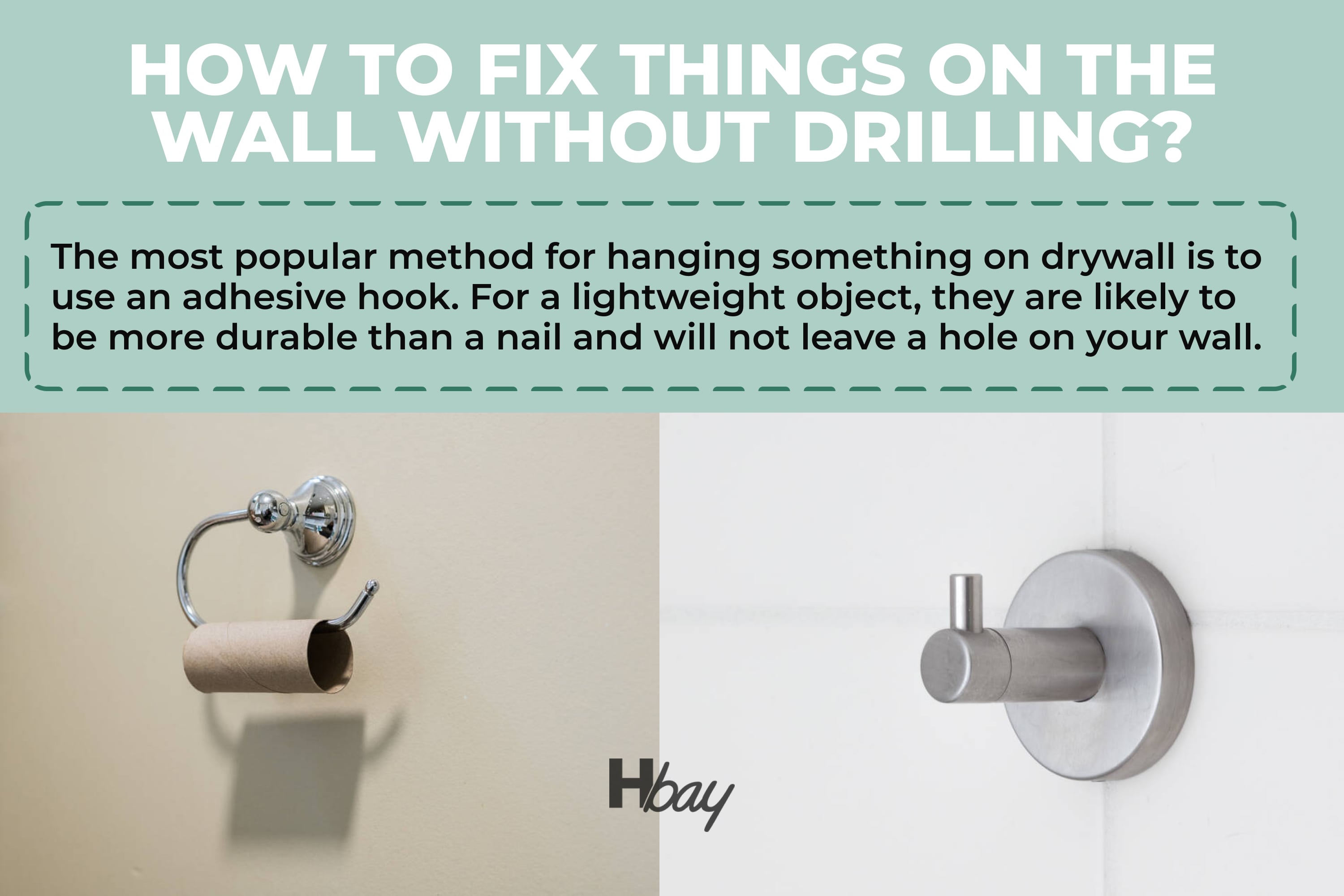
housekeepingbay.com
When tapping directly into an exposed stud, self-tapping screws are an acceptable alternative, but drilling through any form of the outside wall makes it more difficult and increases the risk of stripping or pressuring the screw head or even breaking it entirely off.
The most popular method for hanging something on drywall is to use an adhesive hook. For a lightweight object, they are likely to be more durable than a nail and will not leave a hole on your wall.
As a general guideline, if the thing is too heavy for a hook, it will be too heavy for drywall. You’ll need to drill into a stud if that’s the case.
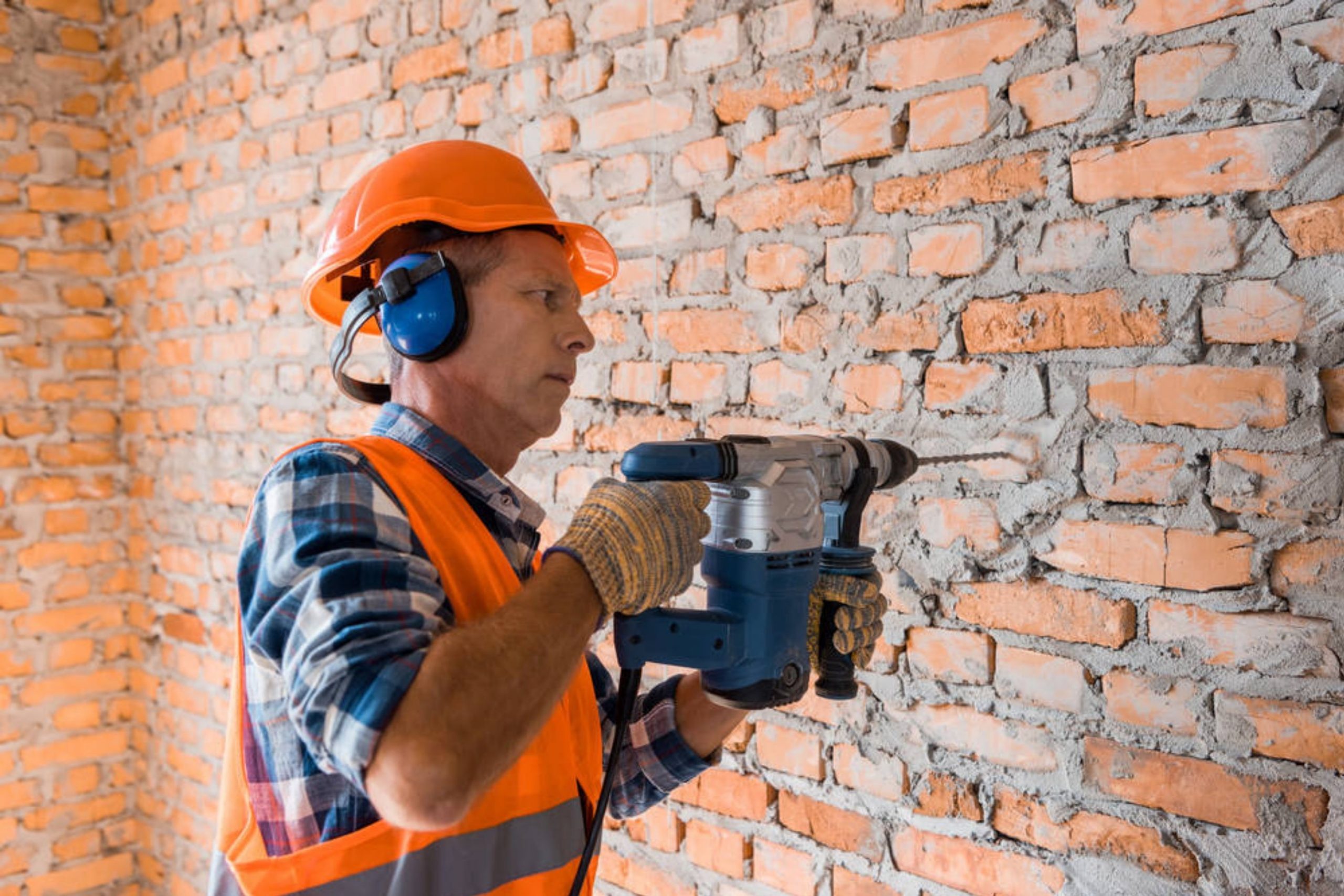
Credits: HayDmitriy, via Crello.com
How to Drill into a Stud in 4 Steps
Regardless of why you want to drill into a stud, the process is easy.
However, the drill may become dull or even break if the tool is not properly selected for a particular surface material, and scratches and cracks may appear on the surface.
To prevent this from happening, you need to take into account several things.
When drilling into a stud, four basic steps should be followed.
Step 1: Find the Stud
Locating the stud is the initial step in drilling into a stud. If you don’t, your new photo frame or piece of art is likely to be smashed into a jumble of little fragments on the floor.
You should have already located the stud you want to drill into if you followed the steps above.
Get a stud finder and locate it if you don’t have one. If you don’t hear a distinct sound, tap along the wall.
Step 2: Find the Edge and Center
After you’ve found the stud, use a pencil to mark the sides of the stud in the drywall, so you don’t drill through one of them.
Knocking along the wall should reveal where the stud terminates; if it sounds hollow, the stud has come to an end.
The average length of wall studs is roughly 2 inches, so that should give you a good approximation.
Take your pencil and mark the middle of the stud once you’ve discovered both ends, so you know precisely where to drill.

Credits: Ninelro, via Crello.com
Step 3: Choose a Drill Bit
It’s more necessary to have the appropriate screw than it is to have the right bit to drill into a wood stud. You’ll need a drywall screw specifically.
When you have those, all it is left to do now is find a bit that matches the screw you’re using, and you’re ready to start.
If you want to hang something substantial on the wall, you actually need to use a screw.
If you’re only hanging a light picture or something, simply hammer a nail into the stud.
However, if you’re trying to mount a television or hang a large frame on the wall, you’ll want to use a screw because it’s more durable.
If you’re drilling into a metal or steel stud, you’ll need to pay special attention to the drill bit you’re using. A bit made of titanium or cobalt is ideal since it is designed for heavy-duty drilling.
A drywall screw is appropriate for metal studs in terms of screws.
Once you’ve decided on a bit, you’ll be ready to drill into the stud.
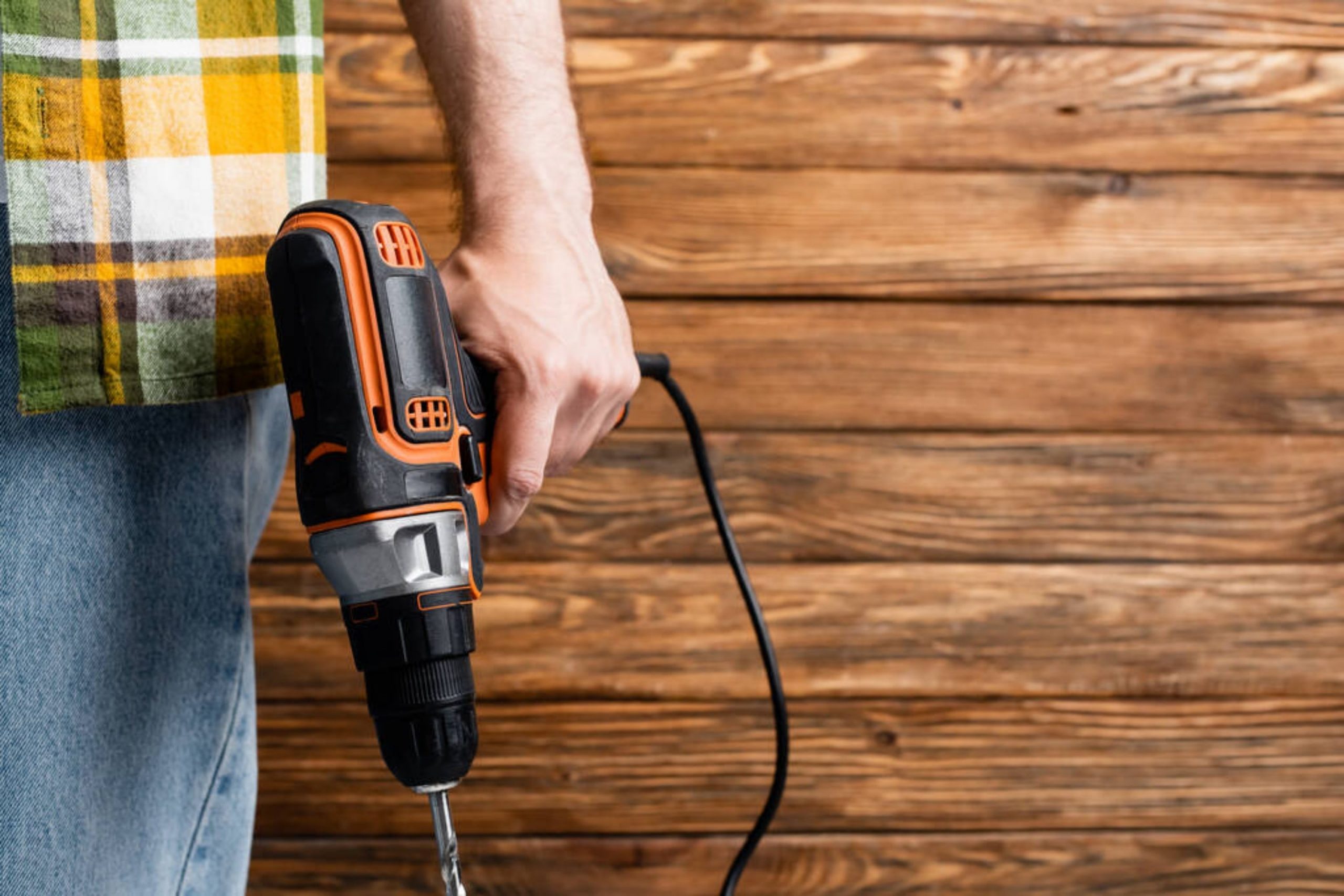
Credits: IgorVetushko, via Crello.com
Step 4: Drilling
Drilling should always be done at low speeds. Usually, the tool is in operation for 10 or 12 minutes.
It is guaranteed that it will not overheat and accidentally break during this time.
If the tool drill is accidentally left in the thickness of the wall, you should carefully remove it without extra pressure.
In another way, the drill will break, and its fragments will remain inside the wall.
If necessary, the drill can be easily detached from the nozzle.
The drill must be held strictly perpendicular to the surface.
If you won’t follow this recommendation, there is a risk of damaging the drill and leaving a dent.
It is also important to take care that drilling dust does not get into the eyes. For this, you can use special glasses and gloves to prevent slipping of your hands during the process.
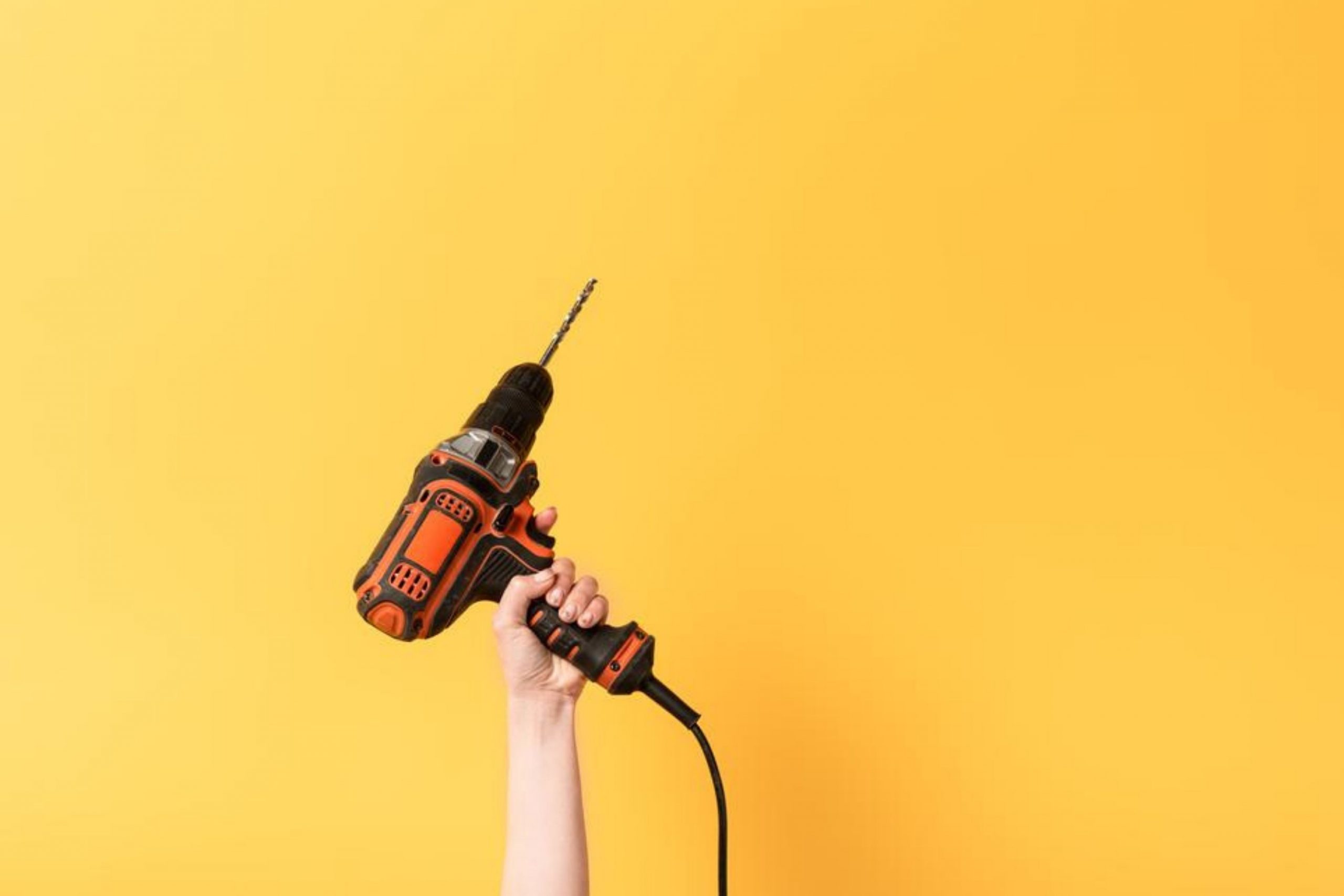
Credits: AndrewLozovyi, via Crello.com
Some Tips for Proper Drilling into Metal Stud
You can drill into metal studs, but you may not be able to do it with a low-end drill because correct metal drilling bits are required.
Bits designed for drilling wood will not do the job.
Bits for drilling metal are often constructed of cobalt or titanium and have a pointed tip that flares out at either a 118-degree angle, which is considered a general purpose metal bit or a 135-degree angle, which is regarded as a more particularly metal boring bit.
To locate your stud, use a stud finder or a tape measure. Studs usually are 16 inches in the center when measured from one corner to the other.
Use a small drill bit to penetrate the outer wall and the stud, similar to a wooden stud.
Because all that is required is to pop through the comparatively thin metal stud, the shorter, the better, what you do next is determined by the method and kind of anchor you use for your project.
When you start drilling metal, the drill itself will reduce the speed relative to the force of friction and pressure on the tool.
In addition, it should be remembered that even small holes should be drilled with two hands.
So you can always accurately control the correct pressure, which is also very important. In order to determine how correct pressure you are applying to the drill, look at the chips that form from the material.
The chips will be thick, spirally curled if the pressure is too strong.
Normal chips, in this case, are thin and brittle.

Credits: AndrewLozovyi, via Crello.com
Related: Drywall vs Plaster. How to Tell?
Can you screw into metal studs without drilling?
Yes, you can screw straight into a metal stud using self-tapping screws like these.
However, we suppose that drilling a pilot hole first is a superior choice that will make the process more manageable in the long run.
Self-tapping screws are a decent alternative when tapping directly into an exposed stud, but drilling through any form of the outside wall makes it more difficult and increases the chances of stripping or excessively tightening the screw head or even breaking the screw head entirely off.

Credits: AllaSerebrina, via Crello.com
Related: Cheap Alternative to Epoxy Resin
Do I need a professional to drill into a stud in my house?
Should you drill into studs, or should you call a professional? Well, the question can be answered in two ways.
Let’s consider the pros of finding an expert.
- You’ll be sure that the work was done correctly;
- You don’t have to worry about proper drilling and securing;
- You will save time.
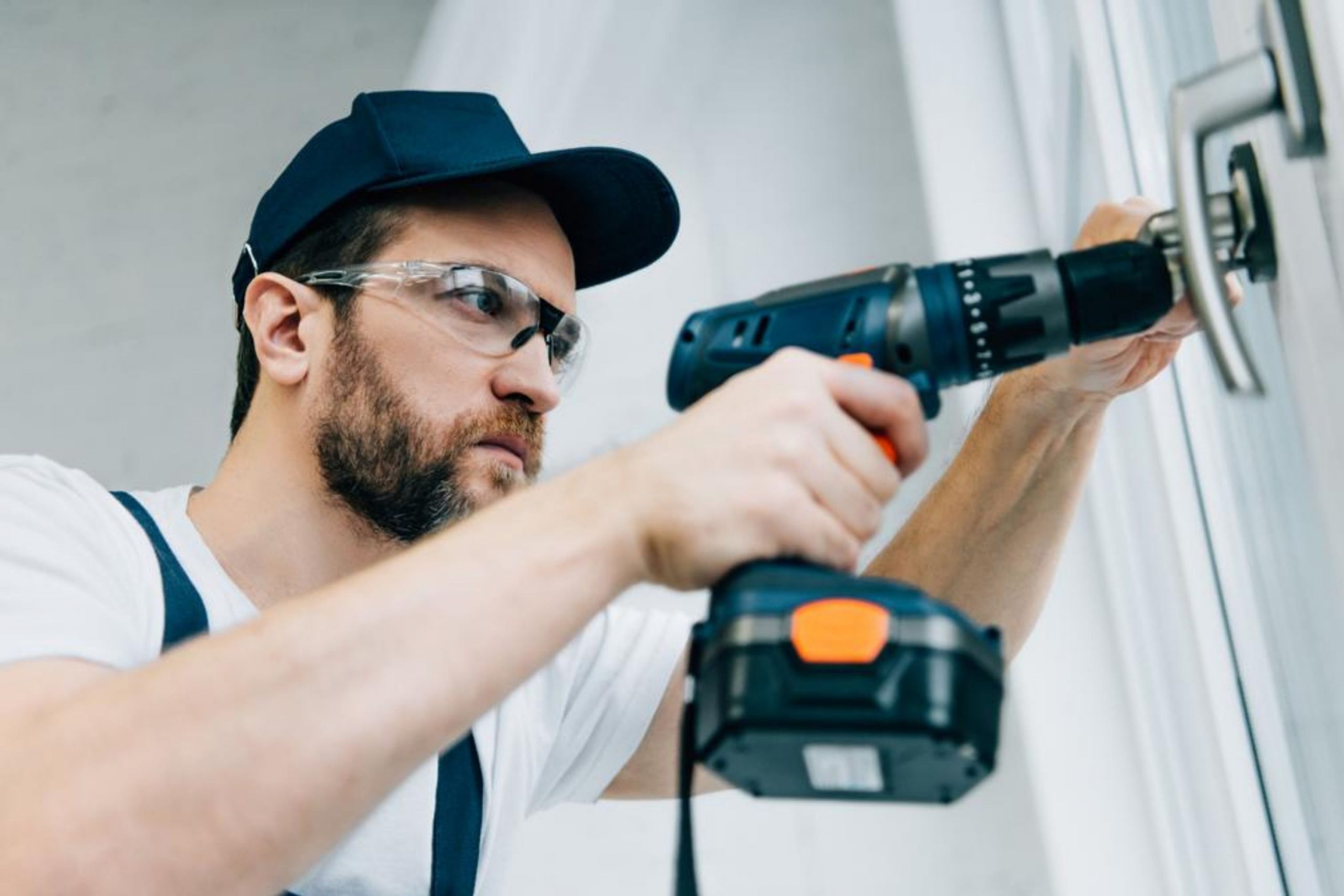
Credits: VitalikRadko, via Crello.com
On the other hand, here come the benefits of drilling into a stud yourself.
- You can do it whenever you want;
- You can get a new skill;
- You can save money.
So, what do you think?
To be honest, we consider that asking a professional is worthy only if you have to mount something massive and heavy on the wall, like a TV or air conditioner.
In any other situation, you can easily do it yourself, especially after you find this guide.
Armor up with a good drill and suitable bits to drill into studs like a pro yourself.

housekeepingbay.com
Ever wished paint sampling was as easy as sticking a sticker? Guess what? Now it is! Discover Samplize's unique Peel & Stick samples. Get started now and say goodbye to the old messy way!
Get paint samples




Frequently Asked Questions
⭐ What if I can't drill into the stud?
There are a lot of reasons why you can’t do it. For example, a dull drill bit, a dead drill battery, the improper drill rotation direction, etc.
⭐ How to drill through a stud?
It requires a rather long screw and more powerful drilling appliance.
⭐ How to screw into a stud?
Take a nail and puncture the wall, try to insert the nail as far as you can. After that, you can insert a screw and proceed.
12 thoughts on “How to Drill Into a Stud – Simple Guide in 4 Steps”
Leave a Reply

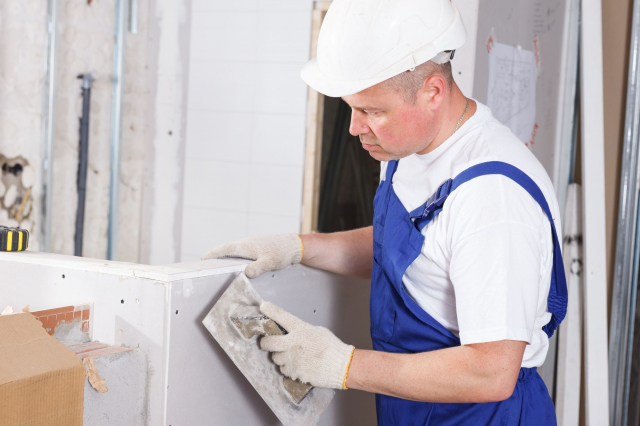

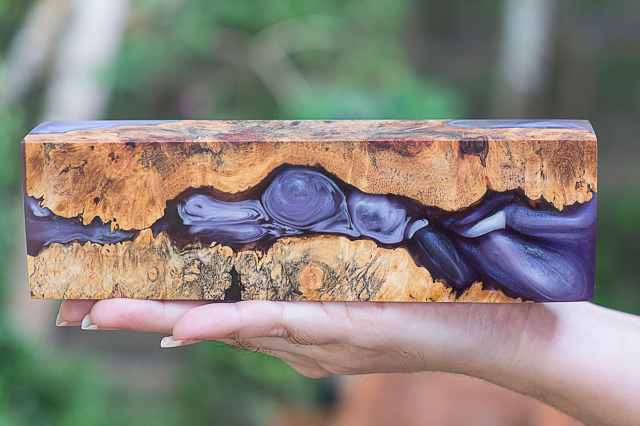

Does anyone know how to drill through studs for wiring if it’s impossible to drill perfectly in the center of a stud, and the wires may be too close to the edge?
As far as I know, drilling doesn’t affect the studs. That means mere drilling won’t make your studs last longer.
Hello everyone. Could you please recommend the best drill bit (or bits) for stud wall? Any help and/or advice will be very welcomed since I’m new to it!
Hello. The most common drill bits used for drilling through studs are auger bits and spade bits.
Hi! I have a question, folks. Are you supposed to drill into studs? I mean, is it mandatory to drill specifically? Can other securing methods be used?
Hey there! As far as I know, drilling is not a must. That means you can use other methods of securing the screws.
How far can you drill into a stud to secure it and not cause any damage to it?
Typically, a hole in a stud can be located 1 1/4 inches from the edge of the wood. That means you have a minimum of 1 1/4 of wood to safely drill into without damaging the stud.
Is it bad to drill into a stud? Can I damage it somehow with the screws?
There is no real damage done to the stud by screwing. Screws are needed for securing the stud in place, but they can’t cause any harm to it.
Hey guys! Does anyone know here how to screw into a stud without using a drill? The thing is that I don’t have a drill and I have nobody to lend it from. But I need to do some screwing already. Thanks for help!
Hey there! I guess you could try using a handheld screwdriver or try out an awl. Also, self-driving screws might be helpful. Maybe there are other methods, but I only know these ones. Good luck!